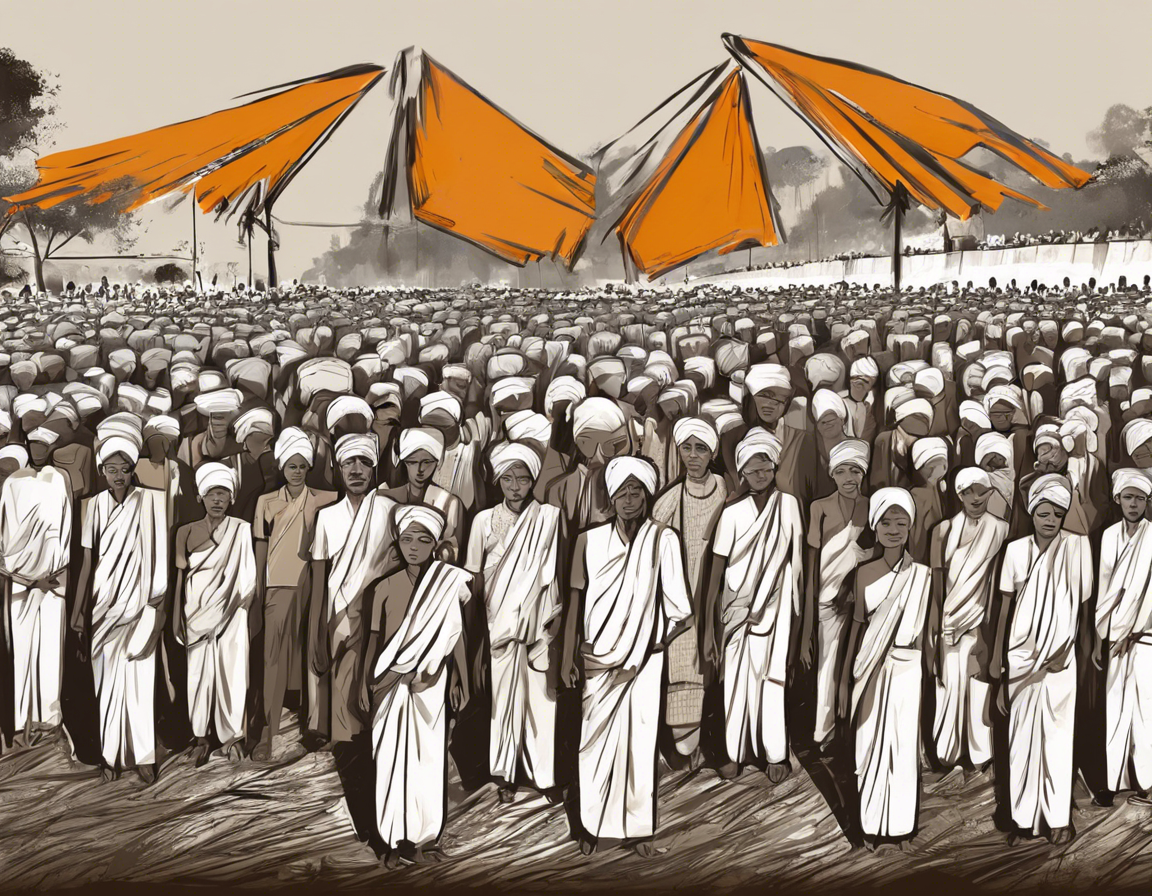Save Narmada Movement: A Fight for Environmental Justice
- 97 Views
- Yash
- May 28, 2024
- Uncategorized
In the realm of environmental activism in India, the Narmada Bachao Andolan (NBA), or Save Narmada Movement, has stood as a pivotal movement advocating for environmental justice and the protection of local communities affected by large-scale development projects. The campaign took shape in the 1980s to protest the construction of dams along the Narmada River, one of the largest westward-flowing rivers in India that flows through the states of Madhya Pradesh, Maharashtra, and Gujarat.
Origins of the Narmada Bachao Andolan
The roots of the NBA can be traced back to concerns raised in the 1960s regarding the construction of large dams in the Narmada River basin. The Sardar Sarovar Dam, one of the central projects in the region, evoked significant opposition due to its potential social and environmental impacts. The movement gained momentum in the 1980s and was formally launched in 1985 under the leadership of social activists such as Medha Patkar, who became a prominent figure in the fight against the dam projects.
Key Issues and Controversies
The Narmada Bachao Andolan highlighted a range of issues pertaining to the construction of dams on the Narmada River. Some of the key concerns included:
1. Displacement of Tribal Communities
One of the primary contentions of the movement was the large-scale displacement of tribal communities and other marginalized groups residing in the Narmada Valley. The construction of dams would submerge vast stretches of land, leading to the forced displacement of thousands of people without proper rehabilitation or compensation.
2. Environmental Degradation
The construction of dams on the Narmada River posed significant environmental threats, including habitat destruction, loss of biodiversity, and disruption of the river’s natural flow. These impacts could have far-reaching consequences on local ecosystems and the sustainability of the region’s natural resources.
3. Socio-Economic Impacts
The NBA also raised concerns about the socio-economic repercussions of the dam projects, particularly in terms of access to livelihoods, agricultural lands, and resources essential for the survival of local communities. The movement argued that these projects disproportionately benefited urban populations at the expense of rural and marginalized groups.
Strategies and Campaigns
The Narmada Bachao Andolan employed various strategies and tactics to advocate for its cause and mobilize support from across the country and beyond. Some of the key approaches included:
1. Non-Violent Protests
The movement organized non-violent protests, demonstrations, hunger strikes, and rallies to raise awareness about the impacts of the dam projects and garner public support for its demands.
2. Legal Challenges
The NBA also pursued legal avenues to challenge the construction of dams, filing petitions in courts and engaging in legal battles to highlight the violations of environmental and human rights laws.
3. Solidarity Campaigns
Recognizing the interconnectedness of environmental issues, the movement collaborated with other social and environmental groups to build alliances and solidarity campaigns both within India and on a global scale.
Achievements and Impact
Despite facing challenges and setbacks, the Narmada Bachao Andolan achieved several notable victories and had a lasting impact on environmental activism in India. Some of the key outcomes include:
-
Suspension of Dam Construction: The sustained efforts of the movement led to the temporary suspension of dam construction projects, including the Sardar Sarovar Dam, and brought greater scrutiny to the social and environmental impacts of large-scale development projects.
-
Rehabilitation and Resettlement: The NBA’s advocacy paved the way for significant improvements in the rehabilitation and resettlement policies for displaced communities, emphasizing the need for adequate compensation, livelihood support, and social welfare measures.
-
Policy Reforms: The movement played a crucial role in influencing policy reforms related to dam construction, environmental impact assessment, and indigenous rights, contributing to a more robust framework for safeguarding the rights of vulnerable populations and protecting natural resources.
Frequently Asked Questions (FAQs)
1. **What were some of the major dams planned on the Narmada River?
The Narmada River basin saw the proposed construction of several major dams, including the Sardar Sarovar Dam, Narmada Sagar Dam, Maan Dam, and Jobat Dam, among others.
2. **How did the Narmada Bachao Andolan raise awareness about its cause?
The NBA utilized various means such as protests, hunger strikes, rallies, media outreach, and engagement with civil society organizations to raise awareness about the social and environmental impacts of dam projects.
3. **What role did Medha Patkar play in the Narmada Bachao Andolan?
Medha Patkar, a prominent social activist, was one of the key leaders of the NBA and played a central role in mobilizing support, advocating for the rights of affected communities, and challenging the construction of dams on the Narmada River.
4. **Did the Narmada Bachao Andolan succeed in halting all dam projects on the Narmada River?
While the movement succeeded in suspending some dam projects temporarily and influencing policy reforms, the complete halting of all dam projects remains an ongoing challenge due to complex political and economic factors.
5. **What are some of the broader lessons learned from the Narmada Bachao Andolan?
The NBA highlighted the importance of community-led activism, transboundary solidarity, legal advocacy, and multi-stakeholder engagement in addressing complex environmental issues and advocating for social justice and human rights.
Conclusion
The Narmada Bachao Andolan stands as a testament to the power of grassroots activism in championing environmental justice, protecting indigenous rights, and challenging unsustainable development practices. As the legacy of the movement continues to reverberate in India and beyond, it serves as a poignant reminder of the ongoing struggles for equity, sustainability, and human dignity in the face of environmental challenges.
His love for reading is one of the many things that make him such a well-rounded individual. He's worked as both an freelancer and with Business Today before joining our team, but his addiction to self help books isn't something you can put into words - it just shows how much time he spends thinking about what kindles your soul!




